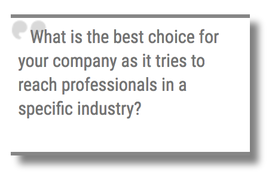- charliesoule
- Feb 21, 2023
- 3 min read

It’s no secret that marketing departments have shrunk over the years. If you’re at a large company, it’s likely you handle what was once the work of two or three people. If you’re at a small company, you might be your company’s entire “marketing department”—all while manning two or three other jobs. It’s enough to make you freak out sometimes. The good news: all that responsibility means every day is a new challenge. The bad news: it can get overwhelming. Below are seven tips to help you manage your time a little more efficiently and keep yourself less stressed. 1. Learn to Say No It’s just two letters, but sometimes ‘no’ is the toughest word in our language. Just because you can do something doesn’t always mean you should. Spreading yourself too thin causes all of your work to suffer. It’s important to be a helpful and cooperative coworker, but sometimes being honest with someone upfront is better than telling them ‘yes’ only to fail to deliver later. 2. Shut Down Your Inbox It’s so easy to become beholden to your inbox. The key is managing your time, not letting your inbox manage your time. Set a block of time where you log out of email, put your phone out of sight (and on silent) and focus on the work you need to get done without the interruption of email.

3. Find Natural Transition Points Wasting 10 minutes here or there can really add up. A common source of lost time is transitioning between tasks. It can be difficult to get one project out of your mind and immediately devote 100 percent
of your attention to something new. To combat this, try to find natural transition points like meetings or lunch. Finish one task before these events. Then, when you return to your desk you can focus on what’s next with a clear head.
4. Plan for Interruptions So you’ve been procrastinating. Your project is almost due so you think, “Today I’ll just focus on this project for four straight hours and get it done.” Of course, things don’t work out that way. Even if you could focus on something for four straight hours you’re bound to be interrupted. People stopping by your desk, phone calls, emails (see #2), impromptu meetings. All of those interruptions can really stress you out if they’re disrupting what you “should” be doing. Keep that in mind when planning your day. You’re going to get interrupted. Things are going to take longer than expected. 5. Plan Ahead Speaking of planning… It’s so simple, but even the slightest bit of preparation goes a long way. As Ben Franklin once said, “By failing to prepare, you are preparing to fail.” Before heading home at the end of the day, take a look at your calendar and jot down some notes or at least mentally prepare yourself for the following day(s). Nothing worse than showing up to work and having a meeting that you forgot about. 6. Set Goals, Mini Goals From the time we’re kids we’re told to set goals. But goals are worthless if they’re not reasonable. Set mini, realistic goals for your day. For example, when I have five custom proposals to create in addition to regular email and phone calls, writing down “Create five new proposals,” is overwhelming. But if I write down, “send proposals to XX and YY before lunch,” I suddenly have a reasonable goal that I’m motivated to get done. Plus, when you’ve achieved that day’s goals you know you can head home satisfied with your day’s work. 7. Eat the Frog
Mark Twain famously said, “Eat a live frog first thing in the morning and nothing worse will happen to you the rest of the day.” Apply this mentality to your to-do list. Get your most unpleasant task out of the way first and your day will only get better from there. Hopefully one or two of these suggestions help make your professional life a little less stressful. And less stress is important important. According to Harvard researcher and New York Times best selling author, Shawn Achor, a positive mindset is the biggest factor in professional success. Achor says 75 percent of our professional success is predicated not by intelligence, but by our optimism, social support network and the ability to manage energy and stress in a positive way. Something to consider next time you’re ready to freak out.




